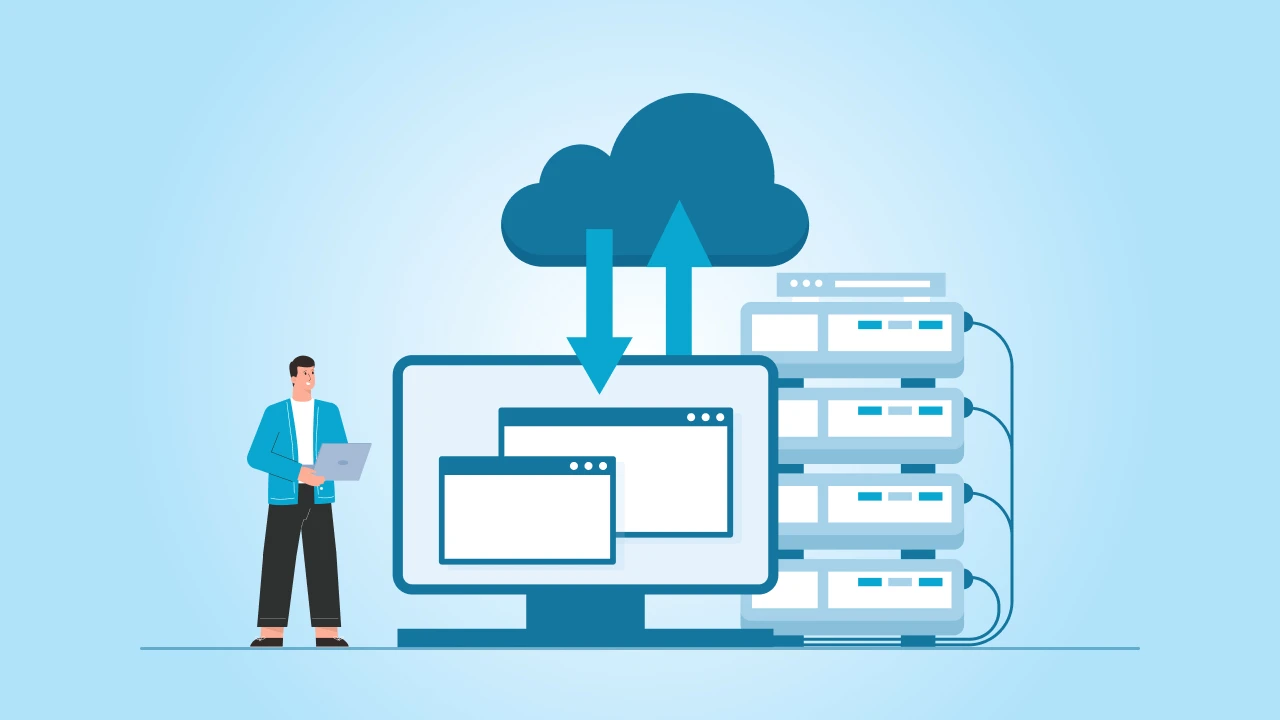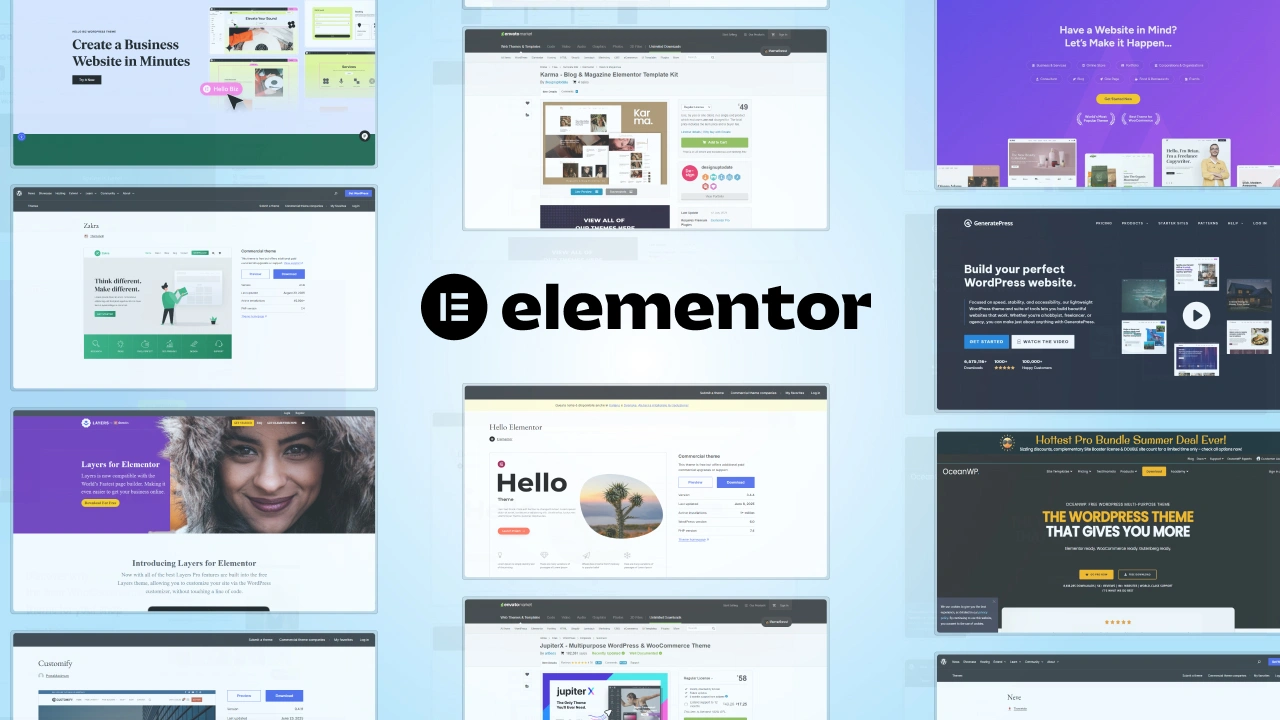Have you ever wondered how businesses, bloggers, or even e-commerce giants create and maintain their websites effortlessly without diving into lines of complex code? The secret behind this simplicity lies in CMS, or Content Management System—a game-changer in the digital world.
What is a CMS?
A Content Management System (CMS) is a software application or platform that empowers users to create, manage, and modify website content without requiring advanced technical knowledge. In simpler terms, it acts as the backbone of a website, streamlining everything from designing layouts to updating content.
So whether you are running a personal blog, a corporate website, or an online store, a CMS allows you to focus on content and user experience rather than grappling with code. It’s the reason millions of websites operate seamlessly every day.
Key Features of a CMS
A Content Management System (CMS) is packed with powerful features that make website development and management a breeze. Here’s a closer look at its most essential capabilities:
1. Ease of Use
- A CMS is designed with user-friendliness in mind, offering intuitive interfaces that allow anyone—regardless of technical expertise—to manage a website.
- Features like drag-and-drop editors, WYSIWYG (What You See Is What You Get) tools and straightforward navigation ensure that even beginners can build and update websites without frustration.
2. Customizability
- CMS platforms provide a wide range of themes and templates to design visually appealing websites tailored to specific needs.
- Users can extend functionality through plugins and extensions, adding features like e-commerce capabilities, social media integration, or advanced analytics without needing custom coding.
- Developers can also tweak code if advanced customization is required, offering flexibility for businesses of all sizes.
3. Content Management
- At its core, a CMS excels at organizing, editing, and updating content. Whether it’s blog posts, product pages, or multimedia galleries, the CMS ensures everything is neatly arranged and easily accessible.
- With built-in content versioning and scheduling tools, users can manage updates efficiently and even restore previous versions of content if needed. Additionally, if you need to print out posters for marketing campaigns or events, a CMS allows you to quickly update designs and download high-quality content for printing.
4. SEO Tools
- Modern CMS platforms come equipped with search engine optimization (SEO) tools to help websites rank higher in search results.
- Features include customizable meta tags, URL structuring, XML sitemaps, and integration with SEO plugins like Yoast for WordPress. These tools ensure your site is optimized for visibility and discoverability.
5. Scalability
- A CMS grows with your website. Whether you’re starting with a small blog or launching a large-scale e-commerce platform, a CMS can handle increasing traffic and content volumes seamlessly.
- Many CMS platforms allow integration with third-party services, ensuring your site can adapt to evolving business needs without sacrificing performance.
- With these features, a CMS transforms the complexity of website management into a streamlined, efficient process, empowering businesses and individuals to focus on their goals rather than technical hurdles.
Not sure which CMS is the best fit for your website?
Types of CMS
Content Management Systems (CMS) come in various forms, each tailored to different needs and use cases. Here are the three primary types of CMS and what sets them apart:
1. Open-Source CMS
Open-source CMS platforms are freely available for anyone to download, use, and modify. They’re immensely popular due to their flexibility and extensive community support.
📌 Examples:
- WordPress: The most widely used CMS, perfect for blogs, small businesses, and even e-commerce sites with plugins like WooCommerce.
- Joomla: A versatile platform suitable for building robust websites with more built-in features than WordPress.
- Drupal: Known for its scalability and customization, making it ideal for large enterprises or complex websites.
Key Advantages:
- Highly customizable with access to thousands of themes and plugins/extensions.
- Supported by active developer communities that provide regular updates, security patches, and troubleshooting.
- Cost-effective for startups and small businesses since the core software is free.
2. Proprietary CMS
Proprietary CMS platforms are owned and maintained by private companies, offering premium features and dedicated support, often at a higher cost.
📌 Examples:
- Sitecore: A powerful platform used by large enterprises for personalized marketing and advanced analytics.
- Squarespace: A user-friendly CMS popular among small businesses and creative professionals for its stunning templates and simplicity.
Key Advantages:
- Premium customer support and professional-grade security.
- Integrated features like built-in hosting, analytics, and marketing tools, make them all-in-one solutions.
- Typically easier to use for non-technical users, as customization options are limited to what the provider offers.
Considerations:
- Higher costs due to subscription fees or licensing.
- Limited flexibility compared to open-source options.
3. Headless CMS
A headless CMS decouples the back-end content management system from the front-end presentation layer, offering unparalleled flexibility for developers.
How It Works:
In a traditional CMS, the back-end (content management) and front-end (user interface) are integrated. A headless CMS, however, focuses only on managing and delivering content through APIs. The front end can be developed separately using any framework or technology.
📌 Examples:
- Contentful: A modern, API-first CMS for multi-platform content delivery.
- Strapi: An open-source headless CMS that’s highly customizable and developer-friendly.
- Sanity: Known for its real-time collaboration and flexible content modeling, making it a popular choice for Sanity CMS development.
Key Advantages:
- Ideal for delivering content across multiple platforms like websites, mobile apps, IoT devices, or even VR environments.
- Offers developers full control over how content is presented, making it perfect for unique and custom front-end experiences.
- Scalable and future-proof, as the back-end content is not tied to specific front-end technologies.
Considerations:
- Requires a higher level of technical expertise to set up and maintain.
- Developers need to build the front end from scratch, which can increase costs and time.
Advantages of Using a CMS
A Content Management System (CMS) offers numerous benefits that make website creation and maintenance more efficient and accessible. Here’s why millions of businesses and individuals rely on CMS platforms:
1. Save Time and Reduce Costs
- CMS platforms simplify the process of building and managing a website, eliminating the need to start from scratch with coding.
- Pre-designed themes, templates, and plugins allow you to launch a website quickly, reducing development time significantly.
- For ongoing maintenance, you don’t need a dedicated web developer, as many CMS tasks can be handled in-house.
2. Allow Multiple Users to Collaborate on Content
- CMS platforms often include multi-user functionality, enabling team members to collaborate seamlessly on content creation and management.
- Role-based access control ensures that team members can work within their scope (e.g., editors can update content, administrators manage the platform).
- Version control and content history allow teams to track changes and revert to previous versions if needed.
3. Make Website Management Accessible to Non-Developers
- A CMS removes the need for technical expertise by offering user-friendly interfaces and features like drag-and-drop functionality and visual editors (e.g., WYSIWYG tools).
- Non-developers can manage tasks like updating text, uploading images, and adding new pages without touching code.
4. Improve Website Scalability and Customization
- CMS platforms grow with your needs, allowing you to add new features and expand content without disrupting your existing setup.
- Open-source CMS platforms like WordPress and Drupal offer extensive customization through plugins, themes, and developer tools. Proprietary platforms like Sitecore provide enterprise-grade scalability for complex needs.
- Integration with third-party tools (e.g., CRM, email marketing, analytics) ensures that your website evolves with your business.
Who Should Use a CMS?
Now, a Content Management System (CMS) is a versatile tool that caters to a wide range of users and organizations, regardless of their size or technical expertise. Here’s how different groups can benefit from using a CMS:
1. Businesses
- Corporate Websites: Businesses use CMS platforms to create professional websites that showcase their services, products, and brand identity.
- Benefits:
- Build a scalable website that can grow alongside the business.
- Use built-in SEO tools to improve visibility and attract more customers.
- Update content like announcements, blogs, or events quickly without relying on developers.
📌 Example: A real estate agency can use WordPress to manage property listings, add new pages for developments, and integrate contact forms for leads.
2. Bloggers
- Personal Blogs: A CMS is perfect for individuals who want to share their thoughts, stories, or expertise online.
- Benefits:
- User-friendly interfaces make it easy to write, edit, and publish posts.
- Plugins and templates enable customization to reflect personal style.
- Built-in analytics and SEO tools help grow the audience.
📌 Example: A travel blogger can use Joomla to create a visually appealing site with photo galleries and embedded videos to engage readers.
3. E-Commerce Platforms
- Online Stores: For businesses selling products or services, a CMS can serve as a foundation for an e-commerce website.
- Benefits:
- Features like product catalogs, payment gateways, and inventory management are easily integrated.
- Mobile-responsive templates ensure a seamless shopping experience across devices.
- Scalability allows businesses to expand their product offerings as they grow.
📌 Example: An artisan can use Shopify (a CMS tailored for e-commerce) to create an online store, manage orders, and process payments securely.
4. Non-Profits and Charitable Organizations
- Awareness and Fundraising Websites: Non-profits use CMS platforms to create websites that raise awareness, share updates, and accept donations.
- Benefits:
- Cost-effective solutions to build and maintain websites on a budget.
- Plugins for accepting donations and event registrations.
- Tools to share updates and engage with supporters through blogs or newsletters.
📌 Example: A local animal rescue can use Drupal to create a website showcasing adoptable pets, volunteer opportunities, and donation options.
5. Educational Institutions
- School and University Websites: A CMS can help educational institutions manage and display information for students, parents, and faculty.
- Benefits:
- Create separate sections for admissions, events, course materials, and faculty profiles.
- Add user portals for students and staff.
- Update information like exam schedules and news alerts efficiently.
📌 Example: A university can use Drupal to build an educational website with sections for academic programs, campus news, and student login areas.
How to Choose the Right CMS
Selecting the right Content Management System (CMS) is a critical decision that can impact the success and functionality of your website. Here’s a guide to help you make an informed choice based on your specific needs:
1. Purpose: Define Your Website’s Goals
The first step is understanding what your website will be used for. Each CMS has strengths that cater to specific purposes.
Considerations:
- Blog or Portfolio: WordPress is an excellent choice due to its simplicity and extensive library of themes and plugins.
- E-Commerce: Platforms like Shopify (proprietary) or WooCommerce (a WordPress plugin) offer specialized tools for selling products online.
- Corporate or Enterprise Websites: Sitecore or Drupal provides advanced features like personalization, marketing automation, and scalability.
- Multi-Channel Content Delivery: For delivering content across websites, apps, and IoT devices, a headless CMS like Contentful or Strapi might be best.
2. Technical Skills: Assess Your Team’s Expertise
Your choice of CMS should align with the technical capabilities of your team or the resources available to you.
Considerations:
- No Technical Skills: Platforms like Wix or Squarespace are intuitive and don’t require coding skills, making them ideal for beginners.
- Moderate Skills: WordPress or Joomla offers a balance of user-friendliness and flexibility, requiring minimal technical know-how.
- Advanced Skills: For highly customized projects, open-source platforms like Drupal or a headless CMS provide unparalleled control, but they require significant technical expertise.
3. Budget: Determine What You’re Willing to Spend
The cost of a CMS can range from free to premium-priced, depending on the platform and its features.
Considerations:
- Free/Open-Source Options: WordPress, Joomla, and Drupal are free to use, though you’ll need to pay for hosting, domain names, and any premium themes or plugins.
- Subscription-Based CMS: Proprietary platforms like Shopify or Squarespace have monthly fees, often bundled with hosting, support, and updates. These are ideal for those who prefer an all-in-one solution.
- Custom Development Costs: If you need extensive customization or a headless CMS, factor in developer fees and maintenance costs.
4. Scalability and Customization Needs
Your CMS should grow with your website and support the features you envision for the future.
Questions to Ask:
- Can the CMS handle increased traffic and content as your website grows?
- Does it allow integration with third-party tools like CRMs, payment gateways, or marketing software?
- Are themes, plugins, or customizations available to match your branding or feature requirements?
💡 Tip: Open-source platforms like WordPress and Drupal excel in scalability, while proprietary platforms may have limitations depending on the subscription tier.
5. Tips for Selecting the Best CMS
- Prioritize User Experience: Choose a CMS that is intuitive for the people managing the website daily.
- Test Before Committing: Many CMS platforms offer free trials or demos. Use these to explore features and interfaces.
- Research Community and Support: Open-source platforms often have active communities and forums, while proprietary platforms typically provide dedicated customer support.
- Consider SEO and Marketing Tools: Look for a CMS with built-in SEO capabilities or plugins to enhance your digital marketing efforts.
- Evaluate Security: Ensure the CMS offers regular updates and has robust security features to protect your website from threats.
The Future of CMS
The world of Content Management Systems (CMS) is rapidly evolving, driven by advancements in technology and changing user demands. Here are some key CMS trends shaping the future of CMS platforms and how they will redefine website management:
1. AI-Driven Content Creation and Personalization
- Smarter Content Generation: Artificial Intelligence (AI) is enabling CMS platforms to assist in creating content, from suggesting blog topics to writing SEO-optimized text. Tools like AI-powered chatbots and automated content generators are becoming increasingly common.
- Enhanced User Experiences: AI enables hyper-personalized content delivery by analyzing user behavior and preferences, helping businesses serve the right content to the right audience at the right time.
📌 Example: A CMS integrated with AI could recommend personalized product pages based on a customer’s browsing history, boosting engagement and sales.
2. Integration with Voice Search
- With the rise of smart assistants like Alexa and Google Assistant, CMS platforms are evolving to accommodate voice-optimized content.
- Voice search requires a focus on natural language processing (NLP), schema markup, and conversational keywords to ensure websites are discoverable in voice queries.
📌 Example: Future CMS platforms might offer built-in tools to analyze and optimize content for voice search, ensuring websites remain competitive in this growing medium.
3. Advanced Analytics and Insights
- Modern CMS platforms are integrating more robust analytics tools to provide deeper insights into user behavior and content performance.
- Predictive analytics, powered by machine learning, will help website owners anticipate trends and optimize their strategies proactively.
📌 Example: A CMS might provide real-time suggestions for improving page performance based on user engagement metrics and A/B testing results.
4. Seamless Omnichannel Content Delivery
- As businesses expand their digital presence across websites, apps, social media, and IoT devices, the demand for headless CMS will continue to grow.
- These systems allow for the seamless distribution of content across multiple channels, ensuring a consistent brand voice and user experience.
5. Security and Privacy Enhancements
- With increasing concerns about data privacy and cyber threats, CMS platforms are integrating advanced security features such as automated backups, enhanced encryption, and compliance tools for regulations like GDPR and CCPA.
cmsMinds: Shaping the Future of CMS
At cmsMinds, as a leading website development agency, we stay ahead of the curve by embracing cutting-edge CMS technologies and industry trends. Our team is dedicated to helping businesses leverage the latest innovations in AI, voice search, advanced analytics, and more to create future-proof websites.
By partnering with cmsMinds, you gain access to expertise in emerging technologies, ensuring your CMS development solution is not just relevant today but ready for the challenges of tomorrow. Let us help you navigate the evolving CMS landscape with confidence!
Discover how cmsMinds can help you select and implement the perfect CMS tailored to your business needs.





